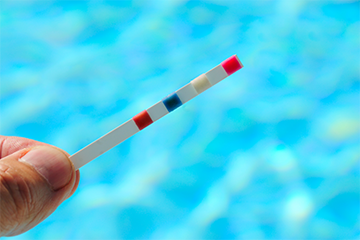Tips for Balancing pH and Alkalinity
Posted
Understanding the relationship between pH and alkalinity is the basis of balancing quality, clean and clear water. Creating a safe and healthy environment for your patients and staff requires ongoing attention and maintenance, but isn’t overly complicated. There are general rules or guidelines to follow in balancing water and achieving an optimal water quality environment.
Typically, the alkalinity is the buffer for all chemical neutrality or a normal range. When the alkalinity is in “normal range” the pH tends to stay in range as well. I refer to alkalinity as the “big word” hence the big brother, and pH being a “little word” or the little brother. The little brother always follows the big brother around.
If the alkalinity is too high, the pH will draw too high and vice versa. Because water sources are different all over the country, it’s important to conduct an initial test on your fresh water. I suggest you fill a bucket with the water source you use to fill your unit or pool with, test it and record those values so you have a baseline where you will start every time on a fresh fill. A water source stays consistent over a long period of time unless you switch utilities or go on/off a particular well.
In a perfect world, if the alkalinity is in range then the pH will be in range too. Since this is not always the case, the key is to use alkalinity to keep pH stable. Here are some examples:
I hope you find these balancing rules helpful to keep your water environment in range. Balancing adjustments are easy and treated water is safe to use in 15 minutes. Contact Ask Sam today to learn more about how we can help improve your water.
You can buy pH and alkalinity products conveniently from Hudson’s online Store – in stock now!




